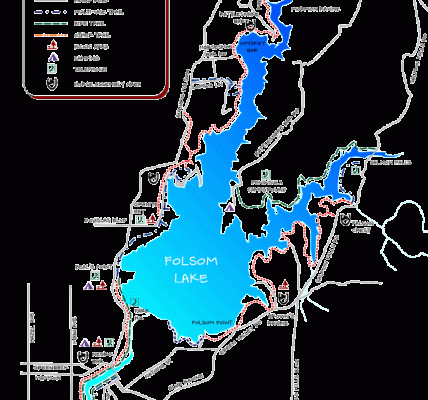The world of aerial sports offers a captivating blend of freedom and adrenaline‚ and among the most accessible are paragliding and hang gliding. These two disciplines‚ while sharing the skies‚ differ significantly in their equipment‚ techniques‚ and overall experience. Both paragliding hang gliding offer unique opportunities to experience flight‚ but understanding their nuances is crucial for choosing the right adventure; Deciding between paragliding and hang gliding involves considering factors like learning curve‚ portability‚ and preferred flying style.
Paragliding vs. Hang Gliding: A Head-to-Head Comparison
Let’s delve into the key distinctions between these exhilarating activities:
- Wing Design: Paragliders utilize a flexible‚ ram-air wing that inflates with air pressure‚ creating a glider-like shape. Hang gliders‚ on the other hand‚ employ a rigid‚ delta-shaped wing made of aluminum or carbon fiber and fabric.
- Pilot Position: Paragliders typically sit in a harness suspended below the wing‚ while hang gliders lie prone within the wing structure.
- Speed and Maneuverability: Hang gliders generally achieve higher speeds and offer more precise maneuverability due to their rigid wing and pilot control system. Paragliders are slower and more reliant on thermals and wind conditions.
- Portability: Paragliders are significantly more portable‚ packing down into a backpack. Hang gliders require larger vehicles and more effort for transportation.
A Closer Look at Paragliding
Paragliding is often described as the “easy” entry point to soaring. The learning curve is typically shorter‚ and the equipment is more forgiving. Paragliders excel at thermal soaring‚ using rising columns of warm air to stay aloft for extended periods and cover considerable distances. Their slower speed and gentler handling make them ideal for scenic flights and enjoying the landscape below.
A Closer Look at Hang Gliding
Hang gliding offers a more direct and visceral flying experience. The pilot becomes an integral part of the wing‚ experiencing the wind and air currents firsthand. The higher speeds and precise control allow for more dynamic maneuvers and a greater sense of freedom. However‚ the learning curve is steeper‚ requiring more physical strength and coordination.
Which is Right for You?
The choice between paragliding and hang gliding ultimately depends on personal preferences and priorities. Consider the following:
- Your desired level of adrenaline: Hang gliding offers a more intense and adrenaline-fueled experience.
- Your preferred flying style: Do you prefer leisurely scenic flights or dynamic maneuvers?
- Your budget and storage space: Paragliding equipment is generally less expensive and easier to store.
- Your physical fitness: Hang gliding requires more physical strength and endurance.
Choosing between these sports is a personal journey. Ultimately‚ the best way to decide is to experience both firsthand through introductory lessons. These lessons will provide invaluable insights and help you determine which aerial adventure aligns best with your aspirations. As you consider your options‚ remember that safety is paramount‚ and proper training is essential for both paragliding hang gliding.
Once you’ve had a taste of both‚ you’ll likely find one resonates more deeply with your personality and aspirations. Let’s explore some further considerations to solidify your decision.
Beyond the Basics: Diving Deeper into Skill Development
Both paragliding and hang gliding offer a lifetime of learning and skill refinement. Don’t be fooled into thinking either is “easy” once you’ve mastered the basics. Each discipline has its own unique set of challenges and opportunities for growth. In paragliding‚ you’ll become intimately familiar with meteorology‚ learning to predict thermal activity and navigate complex air currents. You’ll also hone your piloting skills for precise landings and efficient cross-country flights.
In hang gliding‚ the emphasis shifts towards aerodynamics and control precision. You’ll learn to manipulate your wing with subtle movements‚ maximizing performance and executing advanced maneuvers. Strength and stamina become increasingly important as you progress‚ allowing you to handle longer flights and more demanding conditions.
The Importance of a Solid Foundation
Regardless of which path you choose‚ prioritize quality instruction from certified instructors. A strong foundation in fundamental skills and safety procedures is absolutely crucial. Don’t cut corners or try to learn on your own. The skies are unforgiving‚ and a well-trained instructor will provide you with the knowledge and skills you need to fly safely and confidently.
Continuing Education and Community
As you progress‚ seek out opportunities for continuing education and connect with the local flying community. Attend workshops‚ seminars‚ and fly-ins to learn from experienced pilots and share your own knowledge. The flying community is a valuable resource for support‚ advice‚ and camaraderie. You’ll find that experienced pilots are often eager to share their knowledge and help newcomers navigate the challenges of learning to fly.
Long-Term Considerations: Gear‚ Travel‚ and Progression
Think about the long-term implications of your choice. Consider the cost of gear‚ maintenance‚ and insurance. Paragliding equipment is generally less expensive and easier to transport‚ making it a more accessible option for those on a budget or who travel frequently. Hang gliding equipment‚ on the other hand‚ requires more specialized transportation and storage solutions.
Also‚ think about the types of flying you aspire to. Do you dream of soaring over mountain ranges‚ exploring new landscapes‚ or competing in distance flying competitions? Both paragliding and hang gliding offer opportunities for adventure‚ but the specific types of adventures may differ. For example‚ paragliding is often favored for hike-and-fly adventures‚ where pilots hike up mountains with their equipment and then fly down. Hang gliding‚ on the other hand‚ is often preferred for soaring in strong winds and executing acrobatic maneuvers.
So‚ after weighing all the factors‚ consider what speaks to your soul. The thrill of soaring through the air is an experience unlike any other. Whether you choose paragliding or hang gliding‚ embrace the journey‚ prioritize safety‚ and never stop learning. In the end‚ the shared experience of flight unites all pilots‚ regardless of their chosen discipline. Remember‚ the best choice is the one that brings you the most joy and allows you to safely explore the boundless beauty of the skies.
Finally‚ as you stand on the precipice of this exhilarating decision‚ let’s talk about progression. In both paragliding hang gliding‚ your journey doesn’t end with your initial certification. It’s just the beginning! Think about the skills you want to develop‚ the types of flying you want to experience‚ and the goals you want to achieve. Are you interested in cross-country flying‚ acro flying‚ or competition flying? Do you dream of flying in exotic locations around the world? Your choice of discipline will influence the path you take and the opportunities that become available to you.
Mentoring and Continued Growth
One of the most rewarding aspects of both paragliding and hang gliding is the opportunity to mentor others and give back to the community. As you gain experience‚ consider becoming a mentor to new pilots. Share your knowledge‚ offer guidance‚ and help them navigate the challenges of learning to fly. Mentoring is not only a great way to give back‚ but it’s also a powerful way to deepen your own understanding and appreciation for the sport.
Advanced Skills and Certifications
As you progress‚ consider pursuing advanced certifications. These certifications demonstrate your commitment to safety and proficiency‚ and they can open doors to new flying opportunities. For example‚ you might pursue a tandem rating‚ which allows you to fly with passengers‚ or a tow rating‚ which allows you to launch from flat ground using a tow system. The possibilities are endless!
Staying Current and Connected
The world of paragliding and hang gliding is constantly evolving. New technologies‚ techniques‚ and regulations are constantly emerging. To stay current‚ it’s important to continue your education‚ attend workshops and seminars‚ and connect with the flying community. Subscribe to industry publications‚ follow relevant online forums‚ and attend local fly-ins. By staying informed and connected‚ you’ll be able to stay ahead of the curve and enjoy the sport safely and responsibly.
The Final Ascent: Embracing the Freedom of Flight
Ultimately‚ the decision of whether to pursue paragliding or hang gliding is a deeply personal one. There’s no right or wrong answer. The best choice is the one that resonates most strongly with your heart and soul. Both disciplines offer incredible opportunities for adventure‚ personal growth‚ and connection with nature. As you embark on this exciting journey‚ remember to prioritize safety‚ embrace the challenges‚ and never stop learning.
And remember‚ the sky is the limit. So‚ choose wisely‚ train diligently‚ and prepare to experience the unparalleled freedom of flight. May your wings always carry you safely‚ and may your flights be filled with joy and wonder! As I began this exploration‚ I said that the most important thing is to find what speaks to you and allows you to safely explore the skies‚ and choosing between paragliding hang gliding is part of that journey.


